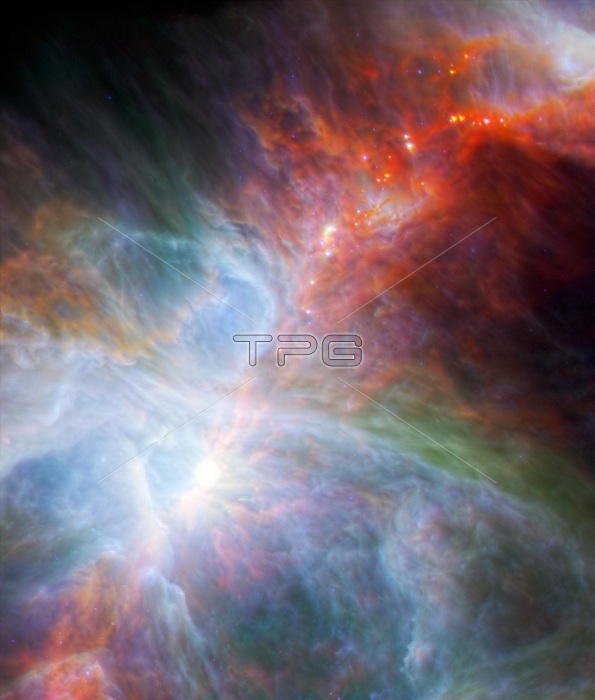
This new view of the Orion nebula highlights fledgling stars hidden in the gas and clouds. It shows infrared observations taken by NASA's Spitzer Space Telescope and the European Space Agency's Herschel mission. A star forms as a clump of this gas and dust collapses, creating a warm glob of material fed by an encircling disk. These dusty envelopes glow brightest at longer wavelengths, appearing as red dots in this image. In several hundred thousand years, some of the forming stars will accrete enough material to trigger nuclear fusion at their cores and become stars. At a distance of around 1,500 light-years away from Earth, this nebula cannot quite be seen with the naked eye. The colors in this image relate to the different wavelengths of light, and to the temperature of material, mostly dust, in this region of Orion. The more evolved, hotter embryonic stars appear in blue.
| px | px | dpi | = | cm | x | cm | = | MB |
Details
Creative#:
TOP22314584
Source:
達志影像
Authorization Type:
RM
Release Information:
須由TPG 完整授權
Model Release:
N/A
Property Release:
No
Right to Privacy:
No
Same folder images:

 Loading
Loading